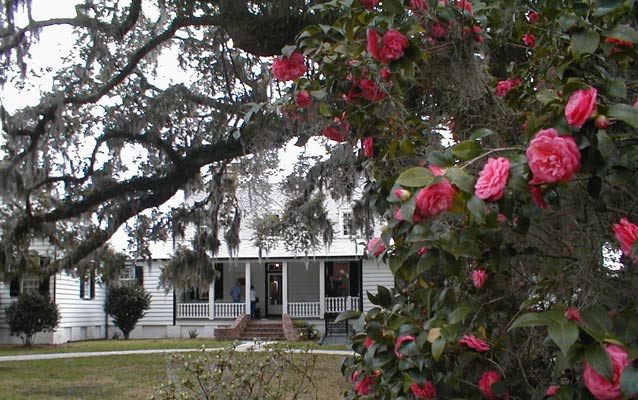Last updated: January 12, 2018
Place
Charles Pinckney National Historic Site

Charles Pinckney National Historic Site, located outside Charleston in Mount Pleasant, South Carolina, is a 28-acre remnant of Charles Pinckney’s original 18th-century 715-acre plantation known as Snee Farm. Purchased by his father Colonel Charles Pinckney in 1754 (three years before the younger Pinckney’s birth), Pinckney spent his childhood splitting time between the Snee Farm “country home” and the family’s downtown Charleston residence. Pinckney inherited Snee Farm in 1782 and continued to grow rice and indigo at the plantation using an enslaved workforce.
Shortly after the Revolutionary War, Pinckney became immersed in American political endeavors that would occupy the next 40 years of his life. His most famous accomplishment was the inclusion of more than 25 clauses in the final draft of the U.S. Constitution. In addition, Pinckney served four terms as governor of South Carolina and as Thomas Jefferson’s Minister to Spain (1801–1805). While his political and social life was based out of his Charleston home, Pinckney used Snee Farm as an accessible country retreat and source of agricultural income.
The demands of Charles Pinckney’s political career made it difficult for him to manage his extensive land holdings, which included six other plantations besides Snee Farm. Conveyed by Pinckney to trustees in 1816 and sold in 1817, Snee Farm had a number of subsequent owners, one of whom built a new coastal cottage-style house on the site of the Pinckney home around 1828. Snee Farm remained intact as an agricultural property into the 20th century, although by the 1930s the farm had the character of a country vacation residence rather than a working farm.
The burgeoning suburban development of Mount Pleasant, formerly known as Christ Church Parish, in the late 20th century finally resulted in the breakup of the Snee Farm property. In the early 1970s, all but a 28-acre core of the original Snee Farm was sold for housing development and a golf course. Snee Farm was listed in the National Register of Historic Places on April 13, 1973, and was also designated as a national historic landmark on November 7, 1973.
Later, a developer purchased the last 28-acre remnant of Snee Farm in 1986. Roads were rough graded and some utilities were installed. In 1988, the Friends of Snee Farm purchased the 28- acre core of Snee Farm from the developer, including the circa 1828 farmhouse and surviving 20th-century agricultural outbuildings. Following congressional authorization of the site, the Friends of Snee Farm sold the site to the National Park Service, ensuring preservation of the core of Snee Farm.
Congress established Charles Pinckney National Historic Site in 1988 to preserve the site of Pinckney’s former home at Snee Farm in present-day Mount Pleasant, South Carolina, and to interpret his life, the lives of Snee Farm’s free and enslaved inhabitants, and the early history of the United States. A half-mile walking trail includes the archeological site of a slave community. Through exhibits and film, the site examines the constitutional compromises dealing with slavery and the growing sectionalism in the young nation that led the way to Civil War. Living history days during National park Week and Constitutional Week include programming on military and domestic life during the late 18th and early 19th century.
The site is part of the Gullah/Geechee National Cultural Heritage Corridor that preserves and interprets the unique local culture of descendants of enslaved Africans. The annual Gullah Heritage Series of cultural programs celebrates the contributions of African Americans to our national heritage. These programs ranger from craft demonstrations such as quilting, cast-net making, indigo-dyeing and sweet-grass basket sewing, to cooking, African drumming and storytelling, folktales, spirituals and other musical performances.
Although the original Pinckney house and outbuildings of Snee Farm no longer stand, the existing 1828 farmhouse that remains today and the surviving outbuildings tell the story of agrarian patterns of South Carolina’s Lowcountry from the mid-17th to the late-20th century. With the house as a backdrop, and because no physical structures from Pinckney ownership of the property remain, the National Park Service emphasizes discoveries from archeological investigations to tangibly connect the Pinckneys to Snee Farm and to provide evidence of the cultural environment that influenced Pinckney and the first decades of the United States as a young nation.
